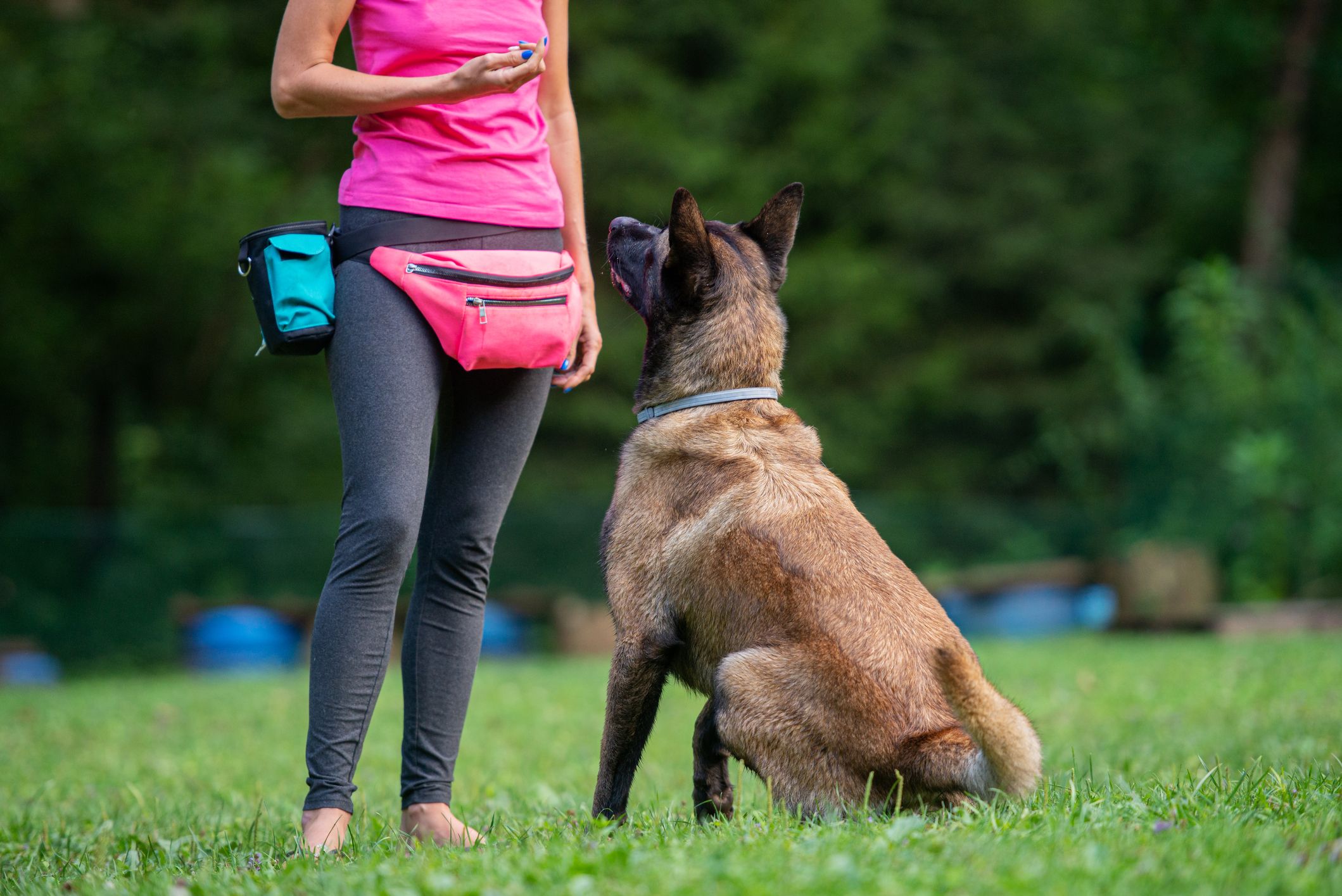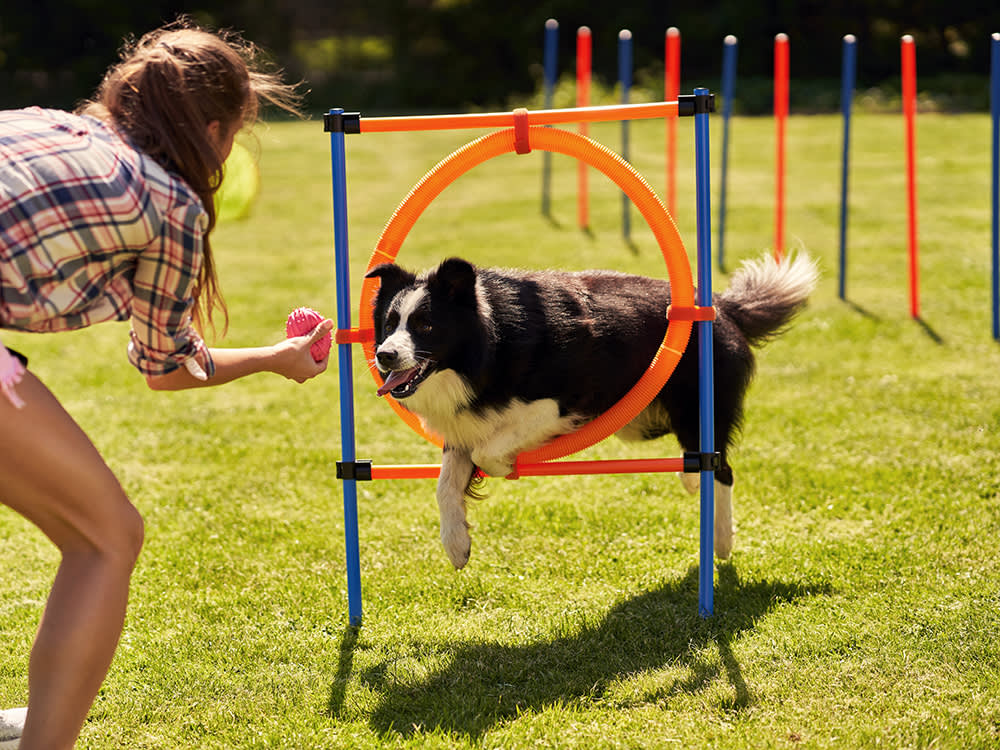Transform Your Pet's Actions With Proven Training Approaches
Transforming your dog's behavior requires a nuanced understanding of their individual characteristics and needs, as well as the application of tested training techniques. By utilizing positive reinforcement and acknowledging essential cues in their body language, you can effectively address common behavioral issues such as excessive barking or jumping. Uniformity in your training strategy not just boosts obedience but also cultivates a much deeper bond of depend on and regard between you and your animal. The path to effective makeover may present unpredicted obstacles that warrant additional expedition.
Recognizing Canine Behavior
Recognizing canine actions is essential for reliable training and communication between humans and their canine buddies. Dogs, as social pets, exhibit a variety of behaviors affected by genetics, atmosphere, and experiences - Dog training. Recognizing these habits helps proprietors tailor their training approaches to satisfy the particular needs of their pets
Secret elements of canine actions include body language, articulations, and social interactions. In addition, socialization plays a vital function in forming behavior; dogs that interact favorably with various individuals and various other animals are typically extra well-adjusted and versatile.
Moreover, identifying stress signals-- such as pacing, panting, or evasion behaviors-- can prevent rise into a lot more major problems. Owners who are in harmony with their canine's behavior can create a nurturing and safe atmosphere, cultivating trust fund and improving the training process. Ultimately, a deep understanding of canine habits lays the foundation for an unified connection and efficient training outcomes, ensuring both canines and their proprietors flourish with each other.
Favorable Reinforcement Methods
Positive support methods are widely recognized as one of the most efficient techniques for training canines, fostering a favorable understanding atmosphere. This technique involves gratifying wanted behaviors with deals with, praise, or play, thus urging the dog to repeat those habits. Unlike punitive methods, positive support constructs trust fund and reinforces the bond between the pet and the trainer.
Rewards need to be given right away adhering to the wanted behavior to assist the pet make the connection. Uniformity is also essential; utilizing the exact same commands and benefits assists the pet dog understand what is expected.
It is necessary to note that favorable reinforcement is not about bribery; rather, it has to do with reinforcing etiquette. Over time, as the dog learns to associate specific actions with positive end results, the regularity of benefits can be slowly minimized, transitioning to verbal praise or intermittent rewards. This technique not only encourages obedience but also advertises a confident and happy dog, making training an extra delightful experience for both events included.
Attending To Typical Problems
Resolving usual problems during pet training is crucial for making certain a harmonious and effective connection between the pet and its owner. Numerous pet proprietors experience behavioral obstacles, such as excessive barking, leaping, and leash drawing. Recognizing the root creates of these habits is critical for reliable training.
To minimize this, supply sufficient physical exercise, mental excitement, and possibilities for social communication with both humans and other pet dogs. Training the canine to sit upon greeting can reroute this habits positively.
Chain drawing is one more widespread problem, regularly resulting from a pet's enthusiasm to explore. Making use of correct chain taking care of strategies, integrated with training methods that encourage loose-leash walking, can significantly enhance this behavior.
Furthermore, concerns like source protecting or separation stress and anxiety call for customized approaches. Gradual desensitization and counter-conditioning can be effective in attending to these obstacles. By identifying and proactively managing these common concerns, pet proprietors can foster a more pleasurable training experience and enhance the bond with their canine buddies.
Consistency in Training

To attain consistency, it is vital that all participants of the home adhere to the exact same training methods. Utilizing the very same verbal signs and hand signals makes sure that the dog gets uniform messages. Furthermore, the timing of modifications and rewards need to be regular; prompt reinforcement raises the chance that the pet will link the habits with the outcome.
Additionally, establishing a regimen can even more boost uniformity. Routine practice sessions, paired with structured timetables for feeding, walking, and play, help canines prepare for and comprehend their setting, making them much more responsive to training. Ultimately, consistency cultivates a right here feeling of safety and security and trust fund, encouraging pets to find out more properly. By dedicating to an organized approach, fitness instructors can advertise favorable behavior modifications and grow a courteous friend.
Structure a Solid Bond
How can fostering a solid bond in between a pet and its owner boost the training experience? A strong partnership improved depend on and respect works as the foundation for efficient training. When a pet dog feels protected in its connection with its proprietor, it is a lot more likely to exhibit positive habits and be receptive to finding out. This bond urges the pet dog to engage fully in training sessions, as it watches the proprietor as a resource of support and support.
Moreover, a solid bond facilitates far better communication. Dogs are experienced at checking out human signs, and a relying on relationship permits clearer signals during training. Proprietors who spend time in building this bond via play, socialization, and favorable reinforcement create an environment where pet dogs feel excited and determined to discover.
Additionally, a reputable connection can lower stress and anxiety and behavior issues, as pet dogs are less most likely to act out when they really feel understood and taken care of. As a result, focusing on the development of a solid bond not just enhances the training experience however also adds to a better and more well-adjusted pet dog. Eventually, the trip of training transforms into a joint collaboration, resulting in lasting behavior renovations.
Conclusion

Proprietors that are attuned to their canine's behavior can create a nurturing and safe environment, cultivating trust fund and boosting the training process. Eventually, a deep understanding of canine behavior lays the structure for a harmonious relationship and effective training end results, making certain both pets and their owners thrive with each other.
Resolving typical concerns throughout canine training is necessary for guaranteeing a successful and unified connection in between the canine and its owner.Uniformity is a cornerstone of reliable canine training, as it establishes a clear structure for the dog to recognize assumptions and habits.In conclusion, changing a canine's habits through confirmed training techniques requires an understanding check this of canine actions, the application of positive support techniques, and an emphasis on consistency.